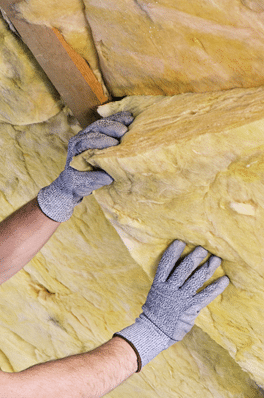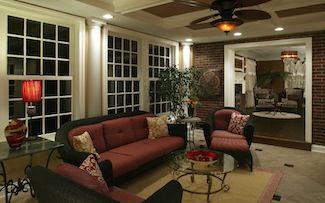
The right insulation can save you a lot of money in heating and cooling bills in the long term. What matters most is the type of home insulation you select. The main goal of insulation is to stop air infiltration gaps. Every home needs a comprehensive set to ward off air that carries extreme temperature and moisture levels. For example, you don’t want freezing air to get too close to those plumbing pipes or electrical wiring within your home, nor do you want moisture to infiltrate around your windows.
In addition to lower energy bills, properly installed insulation with a high R-value (I’ll explain what that means next) offers the added benefit of a quieter and more comfortable home. Proper insulation keeps our homes warmer in the winter and cooler in the summer so our furnace and air conditioners are running at steady temperatures. Insulation also offers sound-absorption, leading to reduced property noise. For example, when your teenager is downstairs playing the guitar, you can read quietly upstairs without hearing Led Zeppelin’s “Stairway to Heaven” riff repeatedly.
R-Value
In the Chicagoland area with frigid winters and hot summers, our homes require insulation with a high R-value (and, by the way, each zone of your home requires a different R-value in order to achieve optimal energy efficiency). R-value is a rating system that measures how well insulation can resist heat flow. The higher the R-value, the greater the insulation properties and the slower heat and cold flows through it. Energy Star provides a thorough overview of what is appropriate for the suburban Chicago area as well as in Lake Geneva, Wisconsin.
The U.S. Department of Energy nicely sums up the types of home insulation available. I’ll boil it down into three categories because these are the options that are most commonly found in Chicagoland area homes:
- Sprayed Foam Insulation (Closed-cell and Open-cell)
- Blown-In Cellulose Insulation
- Fiberglass Batt Insulation
Sprayed Foam Insulation (Closed-cell and Open-cell)
If your budget allows, I recommend insulating your whole house (think walls, ceilings and roofs/attics). If this is an aspect you want to look into, researching something like roofing spray foam should guide you through the importance of this process and allow you to make a decision once you know more. Your attic should be a conditioned space since it is a critical membrane for your home and a prime target for air to escape resulting in energy loss.
Most of our clients opt for sprayed foam insulation. Both the closed-cell and open-cell spray foams are very popular right now. The main difference between the two is that the closed-cell foam has a higher R-value per inch, which means that it is a tad better than the open-cell variety.
Made by the Dow Chemical Company and installed by a trusted insulation sub-contractor, the foam is sprayed in gaps, crevices and cracks, then expands and hardens. It is absolutely my top choice for sealing off any gaps within your home and is your best option for stopping air transfer.
Spray foam is the only insulation that has a true thermal air seal; it creates a permanent barrier to heat loss and air entry. Once the foam is in, it doesn’t degrade and lasts indefinitely because it’s an inert substance. Spray-foam is also mold and moisture resistant.
Blown-In Cellulose Insulation
Another good, green source of insulation we use often is blown-in cellulose. It gets its name from the fact that it is blown through a hose into open attics or wall cavities. It does a decent job of filling up the same voids / gaps I referenced earlier. Blown-in cellulose is very effective at cutting off air filtration and reducing noise transmission, and comes in at a medium price point, too.
Blown cellulose is composed from 80 percent recycled post-consumer waste newsprint, and has the highest recycled content of any insulation available. The paper is shredded and chemically treated for permanent fire resistance.
Fiberglass Batt Insulation
Twenty-four years ago when I started my business, fiberglass batt insulation was installed in virtually every home. Fast-forward to today: when our clients’ projects require a complete gut and remodel of their aging property, we usually remove heaps of fiberglass batt insulation. It’s astonishing to see exactly where batt insulation lets air creep in over a long period of time. It does not seal around the edges of gaps securely enough, and eventually droops, leaving air pockets.
Fiberglass batt is the most affordable insulation available (what I would call “entry-level”). Village building codes allow it, but it is not a product I recommend for maximum effectiveness.
Concerned? Take Charge
Your investment in good insulation will pay off over time. You have control over this situation. If you are concerned that your home’s envelope is not sealed properly and has led to damage resulting from air infiltration and exfiltration, schedule an energy audit. A professional can analyze from where the heat is escaping by using infrared cameras. I’ve seen this problem over and over again. The good news is that there is a fix. Call us if you want the job done right this time.



